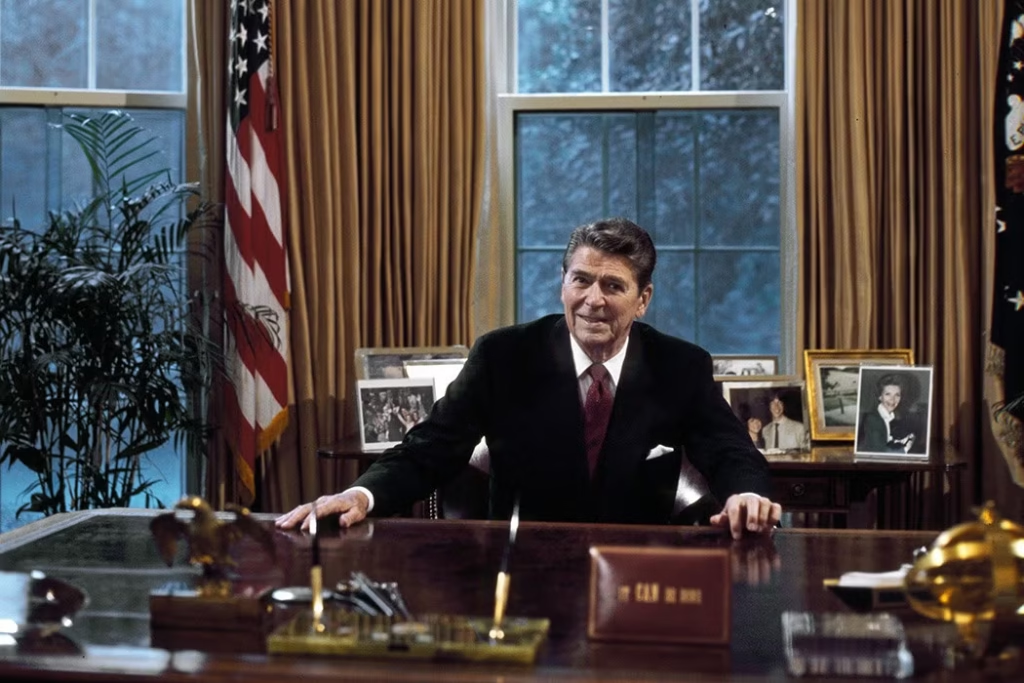The Reagan Administration’s Deregulation Efforts: Economic and Governance Implications
Abstract
The Reagan administration’s economic policies during the 1980s marked a profound transformation in the role of government in American economic life. Rooted in supply-side economics, the administration embarked on an ambitious programme of deregulation, tax reform, and privatisation. Advocates of the strategy argued it would unleash market efficiencies and stimulate economic growth, while critics warned of rising inequality, weakened oversight, and long-term instability. This article examines the origins, implementation, and socio-economic consequences of the Reagan-era deregulatory agenda, providing a balanced analysis of its enduring legacy.

1. Introduction
Ronald Reagan’s presidency (1981–1989) ushered in a fundamental reorientation of U.S. economic policy. Grounded in the ideological framework of neoliberalism, the administration sought to curtail the regulatory role of the federal government in favour of free-market mechanisms. This shift was reflected in a series of deregulatory initiatives that affected key sectors such as finance, telecommunications, energy, environmental protection, and labour.
The implications of these policies were far-reaching. While some hailed the approach for reviving economic growth, others decried its impact on income distribution, regulatory enforcement, and market stability. This article explores the rationale, mechanisms, and effects of deregulation under the Reagan administration.
2. Origins and Objectives of Reagan’s Deregulatory Agenda
2.1 Ideological Foundations: Reaganomics and Supply-Side Theory
The administration’s policies were underpinned by Reaganomics, a school of thought that emphasised:
- Tax cuts to incentivise investment
- Reduced public expenditure to curb inflation
- Limited government intervention to encourage entrepreneurship
Drawing from Friedmanite and Chicago School economics, the Reagan team viewed regulation as a constraint on productivity and innovation.
2.2 Strategic Goals
Key objectives of the deregulation programme included:
- Scaling back federal oversight in major industries
- Privatising public functions, transferring them to private operators
- Curtailing trade union power and reforming labour laws
- Rolling back environmental controls deemed burdensome to business
3. Implementation: Key Deregulatory Measures
3.1 Financial Sector Deregulation
Reagan continued the financial liberalisation initiated in the late 1970s. Notable developments included:
- Relaxation of restrictions on Savings and Loan (S&L) institutions
- Reduced oversight of investment practices and risk exposure
- Deregulation contributed to the S&L crisis in the late 1980s, costing taxpayers over $100 billion in bailouts.
3.2 Environmental Policy Rollbacks
- Funding cuts were imposed on the Environmental Protection Agency (EPA)
- Enforcement of pollution controls was weakened
- Critics warned that this led to environmental degradation and regulatory capture
3.3 Labour Market Liberalisation
- The administration took a confrontational stance toward organised labour, notably in the air traffic controllers’ strike (1981)
- Workplace safety and wage protections were softened
- Union membership declined sharply, altering the dynamics of wage negotiation and labour representation
4. Economic Consequences: Growth, Instability, and Inequality
4.1 Macroeconomic Trends
- The U.S. economy experienced robust GDP growth, particularly in the mid-1980s
- Inflation declined from 13.5% in 1980 to 4.1% by 1988
- Unemployment fell from over 10% in 1982 to 5.3% by 1989
4.2 Income Distribution and Class Disparities
- Top income earners and corporations benefited significantly from tax reductions
- Middle- and working-class wages stagnated, leading to wider income inequality
- The Gini coefficient—a measure of inequality—began its upward trajectory
4.3 Financial Instability
- The deregulatory climate contributed to speculative behaviour and excessive risk-taking
- The 1987 stock market crash (Black Monday) exposed vulnerabilities in the lightly regulated financial system
- Critics argue that Reagan-era deregulation laid the foundation for future crises, including the 2008 financial collapse
5. Political and Public Responses
5.1 Business and Market Endorsement
- Corporate leaders and investors largely supported Reagan’s agenda, citing reduced costs and increased profitability
- Wall Street entered a period of expansion and innovation, although accompanied by increased volatility
5.2 Labour, Environmental, and Consumer Opposition
- Trade unions, consumer rights groups, and environmental activists expressed deep concern over the erosion of protections and safeguards
- Public sentiment was divided, with approval of Reagan’s policies tied closely to economic optimism and political partisanship
6. Conclusion: Evaluating the Legacy
Reagan’s deregulation efforts redefined state–market relations in the United States, embedding a neoliberal orthodoxy that influenced successive administrations. While the 1980s saw notable economic growth and a resurgence of American business competitiveness, the long-term costs remain contested.
Supporters highlight:
- Market revitalisation
- Innovation and entrepreneurial dynamism
- Reduced bureaucratic burden
Critics underscore:
- Income inequality
- Weakened regulatory capacity
- Structural vulnerability to financial shocks
The legacy of Reagan-era deregulation is not merely historical—it continues to shape economic governance debates, from environmental policy to financial regulation in the 21st century.